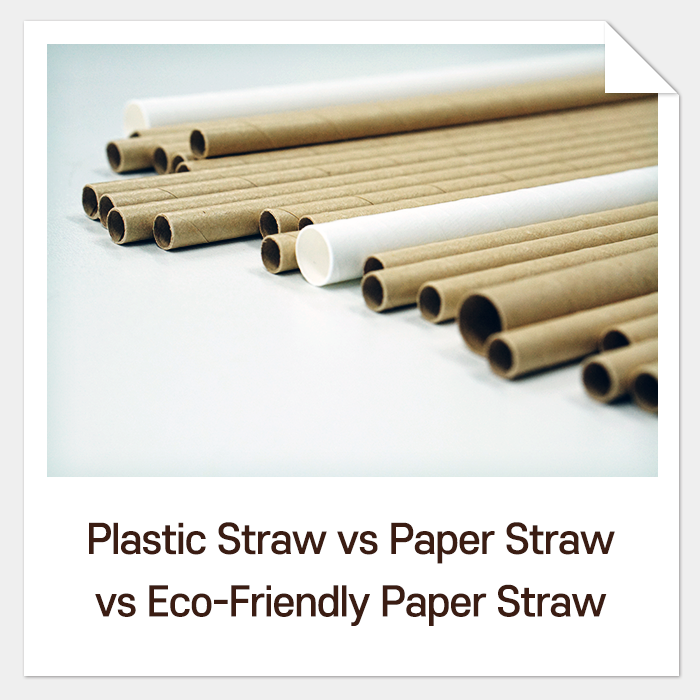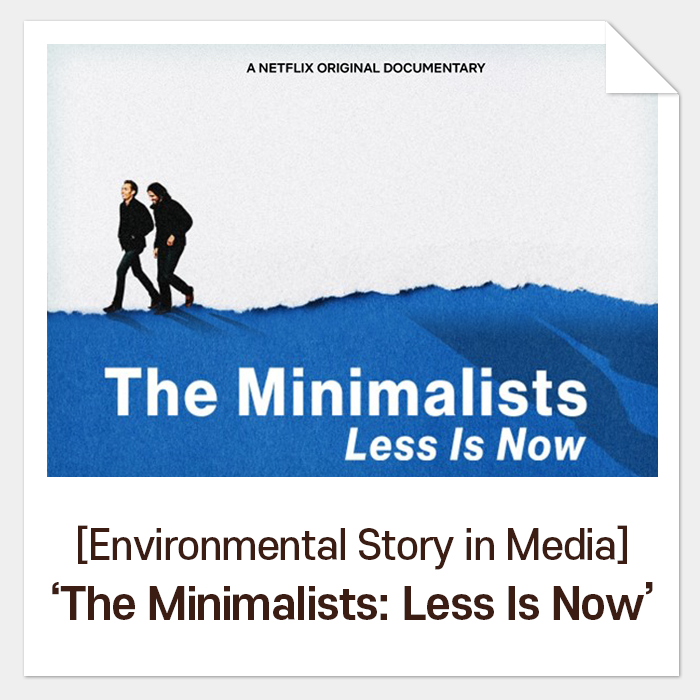Plastic Straw vs Paper Straw vs Eco-Friendly Paper Straw
Most of the inventions are motivated to help and improve the inconveniences in our daily life. For instance, Ermal Fraze invented “pull tab” cans when he struggled to open a bottle of soda at a picnic with friends and family, Washington Sheffield was a dentist who invented toothpaste in a collapsible tube because he thought it was unsanitary to share the toothpaste in one jar with others, and Wayne Fromm thought of the idea of a selfie stick and commercialized it when he couldn’t find anybody to ask to take a picture for him because no one around him spoke English while traveling in Europe.
The way straw was invented was the same. In 1888, Marvin Chesster Stone enjoyed drinking a cup of whiskey after working all day at a cigarette factory at Washington D.C. One day, he tried using natural ryegrass straw to sip his whiskey since he did not like how the taste of the whiskey changes with the warmth of his hands. However, he was not satisfied with the undesirable grassy flavor from the straw, so he took the idea of a cigarette in front of him and made a paper straw by rolling a slip of paper, just like a cigarette, and glued it at the end.
Actually, the history of straws goes back to around 2,400 B.C., when Sumerians in Mesopotamia used straws to drink beer. But Stone’s paper straws were patented and commercialized, then later, innovated with plastic and developed in various forms.
Everything About A Convenient Tool, Straws
How we use straws in our life is truly fascinating. It helps not to spill beverages in transportations like cars and trains, makes it easy to drink liquids for people like little childrens and elders who have trouble drinking by themselves, free our hands when we are busy using our hands in the times like cooking, using machines, or working on computers. Also, it is a necessary tool to help patients and people with disability to ingest nutrients hygienically.
There are various types of straws depending on the purpose; straight type of straw for bubble tea, thin and short straw for yakult, telescopic paper straw for packaged beverages, and flexible straw for creativity.
 <Purpose: general or bubble tea straws, telescopic paper straw, flexible straws>
<Purpose: general or bubble tea straws, telescopic paper straw, flexible straws> <Materials: rice straws, bamboo straws, wheat straws, sweed straws, PLA straws, paper straws>
<Materials: rice straws, bamboo straws, wheat straws, sweed straws, PLA straws, paper straws>As for its various types, straws are made with various materials: plastic is most commonly used, and other materials like paper, cornstarch, rice, seaweed, bamboo, sugarcane, etc are also used. Furthermore, reusable straws are made with stainless steel, silicon and glass.
 <Reusable: stainless steel straws, silicone straws, glass straws>
<Reusable: stainless steel straws, silicone straws, glass straws>Plastic Straw Awakening the World
In 2015, plastic straw became such a nuisance globally when the picture of a turtle with a plastic straw stuck up in its nostril in Costa Rica went viral. Plastic has begun to be recognized as a threat to the safety of the ecosystem and humans since it will not decompose even after 500 years but will break into micro pieces that will affect our next generation and generations after that.
As China legislates started banning plastic waste import in 2017, countries around the world have also started to enact plastic regulations. Addition to these regulations, the use of plastic straws is also beginning to be either implemented or prepared in those countries.
The UK, which uses 4.7 billion straws annually, banned single-use plastic straws in 2020 and, followed by the UK, the EU started single-use plastic straw ban in July 2021. In the U.S., starting with Seattle in July 2018 and California in 2019 made it mandatory for restaurants to serve plastic straws to customers upon request. Furthermore, cities such as Los Angeles, Malibu, San Francisco, Miami, Hawaii, Vermont and Colombia have imposed restrictions or bans. The Australian government is expected to implement the Plastic and Circular Economy Act 2021 to ban the sale of disposable straws starting this November. Countries in Asia are also participating in the plastic straw regulations. The Thai government has made an announcement to ban plastic straws by 2022 and the Philippine government is reportedly preparing regulations that will fine or give suspension to businesses when using plastic straws. Moreover, the largest plastic producer, China, has announced phases to reduce plastic pollution from 2020 to 2025 and the first target is plastic bags and straws. The Chinese government expects to reduce plastic use by 200 tons per year.

Government Regulations, Paper Straw Controversy
How about Korea? The Ministry of Environment announced the regulation of disposable products starting November 24. This is in accordance with the newly developed ‘act on the promotion of saving and recycling of resources’ announced on 12.31.2021, which entirely banning the use of disposable cups (both plastic and paper cups), plastic straws and plastic bags at cafes, convenience stores and restaurants. When violated, a three million won (about $3,000 USD) fine will be issued and this regulation is enforced without a guidance period. This seems to be the government’s decisiveness on regulating disposable products, which had taken a step back due to COVID-19.
Yet, a month before the implementation, those involved, such as nationwide cafe owners’ associations, are expressing complaints that confusion is inevitable due to the lack of guidelines for on-site implementation by the Ministry of Environment. Besides, they are worried how this regulation will directly lead to price hikes which results in a sales decline. At the same time, there is a heated controversy on the eco-friendliness of paper straws with raising questions from the media and politicians everyday.
Some showed their opinion on ‘how paper straws are not eco-friendly since it is coated with polyethylene (PE)’, and ‘paper straws are by no means more eco-friendly than plastic straws in terms of LCA and carbon emissions.’ There are also complaints that are more about usability rather than eco-friendliness, such as ‘inconvenient’, ‘pricey’, ‘odd taste’, ‘soggy’, etc. It is true that a lot of energy and water is being used in the process of making paper, but we must understand that the paper industry is a capital-intensive mechanism industry which requires an economy of scale. The government’s enthusiastic support is needed as the paper companies are putting a lot of effort to reinvest on environmental facilities or R&D.
The Essence of The Plastic Reduction Policy
We remember the plastic crisis, when China put a break on importing plastic waste in 2018. Up until then, China has been importing 50% of the world’s recycled waste to turn it into resources, but after China's plastic waste import ban act, the waste flowed all over Southeast Asia. Followed by China, the Thai government also has made an announcement to restrict plastic waste imports by phases starting next year and entirely prohibiting it by 2025 to prevent environmental pollution in the country, which makes it an urgent to prepare a countermeasure.
Since the amount of the plastic waste emitted has far exceeded the amount that can be handled, Korea also prepared plastic reduction policies and regulations. And restricting single-use plastic straws is one of the policies. However, ironically, the eco-friendliness of paper straw became an issue whereas the purpose of this regulation is to reduce plastics. In fact, the Ministry of Environment has neither stated ‘paper straws are eco-friendly’ nor recommended to ‘use paper straws’. It seems like paper has been chosen over other materials for its stability on supply and price competitiveness as an alternative to plastic straws.
What is Eco-Friendly Paper Straw?
According to <Global Opportunity Analysis and Industry Forecast, 2021-2031> from Allied Market Research, the global paper straw market is about $900 million and will reach $3 billion by 2031. In the market scale like this, what we really need is an eco-friendly paper straw rather than a PE coated straw.
Generally, when packaging is eco-friendly, it refers to products that can be resource circulated. Resource circulation means both material and organic recycling. Material recycling is determined by whether the industrial recycling is qualified to be repulpable, and organic recycling is determined by the level of composting, which has to first rot in the ground then organisms or grains can grow in it without toxicity. Even for paper straws, resource circulation is difficult with PE coating. Hence, the controversy is understandable.
However, rePAPER’s RP-SERIES, water based coating, is capable of both of these resource circulation properties. rePAPER’s paper straws are genuine eco-friendly products which do not use adhesive and satisfy both recycling and composting aspects. To be honest, paper straws have limited effect on material recycling because the amount of paper used is very small, and it is highly likely to be contaminated, when being used, that it is difficult to recycle. So in this case, composting is eco-friendly instead of recycling.
<Evaluation of straws based on materials and coatings>
Let’s Not Give A Silly Answer to A Wise Question
The best alternative for the absolute eco-friendliness will be ‘not using it at all’, rather than ‘return to a lower-carbon plastic straw’. In reality, if possible, it is imperative to consider it with multifaceted aspects: environmental, ecological, convenience, and hygiene values. How can it be overcome the effects on the ecosystem and the environment, even if the LCA or carbon emission performance is good?
Wouldn’t it be necessary to find, implement and supplement the most effective alternatives that are fundamental and long-lasting for the plastic reduction policy to be a success with purposeful results? Now, more than ever, is the perfect timing to start an integrated and balanced perspective on the direction of plastic regulation, protection of the ecological environment and lifestyle.





Comments
Post a Comment